Junior level courses
The junior level units are written by the Cosmos for Schools team in Australia. The unit content is context-led by using recent science news articles. Students then learn more about the science behind it. Using interactive multi media activities as well as hands-on experiments to do at home these units are high-interest and engaging.
Simple Machines
What do ramps, stairs, sloping roads, axes, knives, needles and screws have in common? They’re all inclined planes, which are simple machines that make work easier. We’ve been using them for thousands of years but new high-tech versions are still being invented – like screws made out of silk for mending broken bones!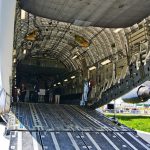
A surprising number of the tools and machines we rely on every day – from door handles and cricket bats to clocks and bikes – can be explained in terms of a few simple ideas. The same principles allowed ancient civilizations to build enormous pyramids and the mysterious astronomical device known as the Antikythera Mechanism.
Simple Machines is a physics unit that does not have any specific prerequisite knowledge.
Ecosystems
Plastic is an incredibly useful material that is all around us – literally. But now plastic waste is swamping our oceans and harming the creatures that live there. It’s also making its way into our bodies through the food chain!
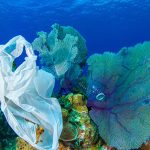 How do ecosystems work and what happens when they are disturbed by human impacts? What can we do to reduce the negative effects of plastic waste?
How do ecosystems work and what happens when they are disturbed by human impacts? What can we do to reduce the negative effects of plastic waste?
Ecosystems is an integrated STEM unit with a biology focus. It is suitable for students who have a basic understanding of food chains, food webs, photosynthesis and energy transfer.
Heat
This unit covers heat transfer in the context of a science news story about the right balance of heat needed to cook the perfect pizza.
Students explore:
- How is heat energy relevant in our everyday lives?
- What are conduction, convection and radiation?
- How can heat be explained using the particle model?
Highlights include an investigation into which material is the best insulator and another investigation into how colours absorb radiation.
Heat is a physics unit that is best suited for students who have already learnt about energy transfer and transformation, and have a good understanding of the particle model.
Active Earth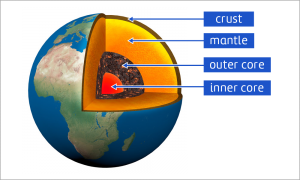
Earthquakes and volcanic eruptions pose a threat to many people around the world. The 2015 Nepal earthquake killed over 9000 people and destroyed many homes.
Why are some countries at a higher risk of these natural disasters? What causes earthquakes and volcanic eruptions? And how does understanding our active planet help society?
Dig into this unit to explore these questions and many more!
Beginning chemistry: Atoms, acids & bases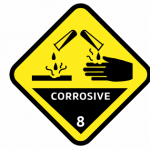
Atoms are the building blocks of all matter – but what are the building blocks of atoms?
The surprising answer to this question has led to both deep scientific insights and cutting-edge technologies. For example, a new scanner allows us to look inside rocks, cameras and car engines like never before!
The ocean is becoming increasingly acidic, a phenomenon that is impacting marine life around the world. Now scientists are reporting that the rate of ocean acidification is the worst it’s been in the last 300 million years.
In this beginning chemistry units students will explore the inside of atoms and do some hands-on experiments with indicators.
Kingdoms & Classification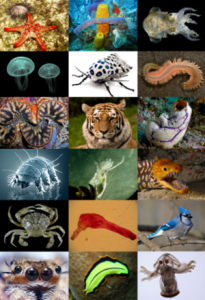
The life around us is incredibly diverse. To help make sense of how all the different species relate to each other, scientists group them into six broad kingdoms.
Why do zebras have stripes? It’s a question that scientists have been asking for more than 100 years, but new research may finally have the answer.
The distinctive striped pattern of zebras makes them instantly recognizable to most people. And it also helps scientists classify them and compare them to other animals.
This biological sciences unit does not require any specific prerequisite knowledge.
Resources
People of every time and culture have relied on nature for resources. We are no different today.
It’s important to know if the way we use resources will leave a healthy, productive planet for our great-grandchildren.

Students explore:
- What are resources?
- Renewability
- Energy resources
- Renewable energy
- Sustainability
The unit also contains an interactive simulation that explores the impact of home electricity use on coal consumption, a section that explores the ethics of using animals as resources, an end-of-unit test, and more.
Elements & Compounds
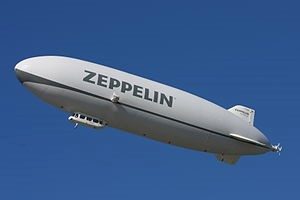 World supplies of helium were running low before the recent discovery of a large deposit of this precious gas in the East African Rift. Helium is one of the elements, the fundamental substances that all others are made out of. On their own or chemically combined to form compounds, the elements make up the huge variety of substances in the world.
World supplies of helium were running low before the recent discovery of a large deposit of this precious gas in the East African Rift. Helium is one of the elements, the fundamental substances that all others are made out of. On their own or chemically combined to form compounds, the elements make up the huge variety of substances in the world.
This is a chemistry unit that introduces elements and atoms, molecules, lattices, the periodic table, and compounds. It is most suitable for students who have already learnt about mixtures. It does not cover atomic structure or chemical reactions.
Earth Sciences
In May 2014 scientists warned South Americans to prepare for severe storms later in the year thanks to an impending El Niño. Water, perhaps our most precious resource, is always on the move.
In the lesson on the water cycle you will investigate:
- What is the water cycle?
- How much of the Earth’s water is drinkable?
- What is El Niño?
- How can you purify sea water?
If you’ve ever spent a day at the beach you’ll know how rocks you were exploring in the morning can be completely submerged a few hours later. But tides don’t just transform beaches – they’re also a source of energy. And the bigger the tide, the greater the power.
In the lesson on tides you will investigate the following:
- What causes tides?
- Why are there usually two high and low tides per day?
- How do tides relate to the phases of the Moon?
- How can you create a simple paper model of the tides?
Kick a stone…those are minerals. Texting on your phone…minerals too, or metals extracted from minerals. Minerals are central to our lives, so why did it take decades to find a sample of the most common one on the planet?
You will investigate:
- What is a mineral?
- What properties do geologists use to identify minerals in the field?
- What minerals make up granite?
- Why are some mineral crystals bigger than others?
In the Science and Society section you will meet geologist Stephanie Sykora who is on the hunt for precious metals. You will also get to think about how prepared you and your family are for a natural disaster.
Our Earth in Space
The New Horizons spacecraft reached Pluto in 2015 and sent back stunning images of the dwarf planet. These discoveries add to our knowledge of the Solar System and remind us how awe inspiring it is.
Eclipses provide us with awesome displays – every time the Earth, Moon and Sun line up, which is not very often! They used to give rise to myths, prophecies and panic, but today are more likely to generate worries about power loss.
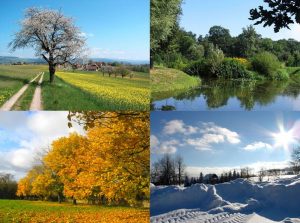
Have you ever wondered why it’s winter in South America, Australia and New Zealand and summer in Europe and North America at the same time? Or why it’s so cold in Antarctica, even in summer? It’s time to find out…
Our Earth in Space is an Earth & Space sciences unit that does not require any specific prerequisite knowledge.
Body Systems
Our bodies work thanks to the co-operation of systems that take food and oxygen to our cells, remove wastes, and keep us at the right temperature. Other animals have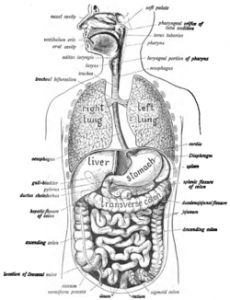 similar but different systems to do the same things.
similar but different systems to do the same things.
This unit covers the digestive, circulatory and respiratory systems in the context of new findings into how boa constrictors actually kill their prey.
Students explore:
- The digestive system
- The respiratory system
- The circulatory system
- Systems in other species
- Thermoregulation
Students are immersed in the topic with an interactive breathing simulation and explore differences between body systems of grasshoppers, sharks, sponges and humans.
Forces & Gravity

How would you like to be able to climb up walls like Spiderman? Geckos can do this – they even walk upside down on ceilings. By studying the forces involved, scientists have figured out how to get a human up a wall, gecko-style.
This unit explores the basics of forces and gravity.
Forces & Gravity is a physics unit that does not require any specific prerequisite knowledge.
Mixtures
Cell biology
In this unit students will learn all about cells. Starting with animal cells and how cells are specialised for certain parts of our body. Then on to plant cells and how they differ from animal cells. Simple cell division will finish off the unit.

Topical themes are 3D printing of human body parts, carnivorous plants and how lizards regrow lost tails.
This biological sciences unit does not require any specific prerequisite knowledge.
Invasive Species
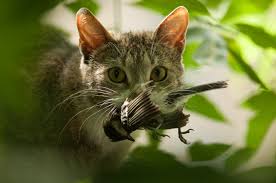 Sometimes when plants or animals move into a new area they take over. Getting rid of these pests is costly and difficult, and trying to solve the problem often makes it worse. New research into feral cats underlines the importance of understanding the complex web of life before we take action.
Sometimes when plants or animals move into a new area they take over. Getting rid of these pests is costly and difficult, and trying to solve the problem often makes it worse. New research into feral cats underlines the importance of understanding the complex web of life before we take action.
This is a biological sciences unit covering the world’s major biomes, ecosystems, habitats and food chains. This unit does not require any specific prerequisite knowledge.
Features of the Young Rutherfords programme:
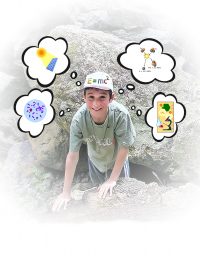
Interactive lesson units include videos, images, graphs, mind maps, polls, simulations and more.
Accessible 24/7 online – from your laptop, tablet, computer or phone
Narrated texts
Marked by a real person!
High-interest, topical science units written by science journalists and teachers
Interaction with fellow students through discussion boards
Affordable
